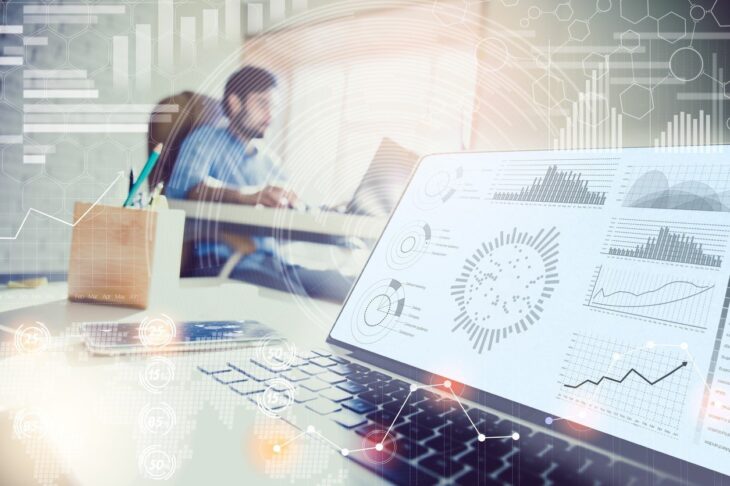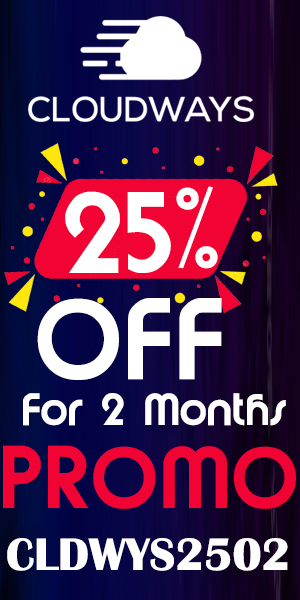Introduction People have long been intrigued by robots due to their capacity for mimicry or surpassing human capabilities. From fictional sci-fi characters like Wall-E to real robots in hospitals, factories , and homes; robotics has taken significant strides forward. We will take an in-depth look into the world of robotics by delving deeper into what these machines are as well as exploring various aspects of what makes them tick as well as potential applications they might serve in today’s ever-evolving society. In this 2000-word comprehensive article we’ll take an in-depth dive into all things related to robotics so you know all aspects and applications they might play in shaping our daily lives and work – welcome back!
Robots, in their most simplistic definition, are computer-controlled machines capable of performing various tasks independently or semi-autonomously. Robots typically carry out physical tasks that interact with their surroundings through cameras, sensors , and various input gadgets such as cameras. Their presence often brings to mind images of android-looking androids but there can also be designs of intelligent little gadgets found within smartphones - though in either instance robots have different purposes!
A. Origin of the Word “Robot”
Karel Capek first coined the term “robot” in his science-fiction 1920 comedy play ‘R.U.R.” also known as Rossum’s Universal Robots; these robots weren’t mechanical but rather biological entities created with artificial methods - hence creating the association with artificial machines that could be programmed.
B. Types of Robots
Industrial robotics are intended for repetitive tasks in production environments and manufacturing plants, often at speed and precision compared to human workers. Renowned for working safely under potentially hazardous circumstances, industrial robots have quickly gained use across industries like electronic assembly, automobile production, and food processing.
Service Robots Service robots are specially-built robots created to interact with humans and assist in various settings – hospitality, healthcare, and our home are among some of their uses – performing tasks such as cooking, cleaning , and medical aid – such as vacuum cleaners like Roomba or personal assistants such as Amazon Alexa.
Autonomous Robots Autonomous robots have the capacity to make decisions and navigate environments independently without human oversight, typically using cameras, sensors, and advanced algorithms for sensing their environment and responding accordingly. Drones or self-driving vehicles fall under this category of robotics.
Humanoid RobotsHumanoid robotics are created to resemble humans in terms of appearance and movement, making them suitable for various areas like healthcare, customer service , and entertainment. Although still under development, such humanoid robotics include ASIMO from Honda as well as Sophia from Hanson Robotics as two examples.
Also Read: Boost Your Instagram Experience with the Instagram Download Reels App: Unleash the Power!
Educational Robots Educational robotics can be utilized in classrooms and educational settings to teach programming design and engineering problem-solving abilities to children. Most educational robots are built so as to be user-friendly so learning robotics becomes enjoyable and accessible to them quickly and easily.
C. Robot Components
To gain a deep insight into how robots function, it’s vitally important to familiarise oneself with their basic components:
Sensors : Robot sensors allow robots to gather information from their surroundings. Common sensors include cameras, ultrasonic sensors, infrared sensors and even touch sensors; all providing important details that robots use when making decisions or engaging with their environment.
Actuators: Robot actuators are responsible for physical movement. Electronic motors, pneumatic systems and hydraulic systems all make up examples of actuators used on robots – these components convert hydraulic or electric energy into physical movement that robots can then move along its course.
Control Systems Control Systems serve as the brain of robots. Comprised of computers and software that processes sensor data to decide how the robot will behave. Their program then dictates its response to various inputs or conditions that affect it.
End Effectors End effectors, commonly referred to as robotic attachments or tools on robot arms and manipulators arms, are used for performing specific tasks; such as welding torches and grippers on industrial robot arms as well as 3D printers. Their purpose can vary based on each robot’s purpose of use.
Now that we understand how robots function and understand all the types available to us, let’s delve deeper. Robotic machinery’s inner workings can be broken down into several key elements:
A. Sensing the Environment
Robots begin their exploration of their surroundings using various sensors such as cameras and ultrasonic distance detecting ultrasonics as well as touch sensing technology to take in information and understand its surroundings. Data gathered through such sensors allows robots to better comprehend their environments.
B. Analyzing Data
After sensors gather information, it’s processed through robotic control systems comprised of both software and hardware components for analysis by robotic control systems. This analysis involves deciphering sensor readings into meaningful decisions made upon them by robot control systems as they decide upon which actions the robot is to undertake next.
C. Decision-Making
Robot decision making relies on complex programs and algorithms designed specifically to make decisions based on its design, purpose and requirements – whether moving objects, navigation or interfering with people - using predetermined rules programmed into robotic software.
D. Actuation
Actuation refers to physical actions and movements performed by robots. Actuators such as motors and hydraulic systems play an essential role in translating robot actions into actual movements – for instance an industrial robot uses actuators that move its arm for painting, welding or assembly production lines.
Robots typically operate via a feedback loop that constantly absorbs sensory data from their environment and adjusts their actions in response to this information. This feedback loop enables robots to adapt quickly to changes, challenges or obstacles encountered along their path and respond in ways to overcome obstacles when necessary.
Communication Robots may be designed to interact with humans or machines for various reasons. Human communication with robots may help with tasks, remote operations or providing vital information; autonomous vehicles for instance can communicate among themselves to manage traffic flow and improve security.
G. Learning and Adaptation Strategies
Recent advances have witnessed tremendous strides made towards creating robots capable of learning from past experience and adapting to changing conditions. Artificial intelligence and machine learning techniques enable these machines to enhance their abilities over time and become more adaptable when faced with complicated tasks.
Also Read : Hydraulic Systems: Powering Industries and Machinery
III. Applications of Robots
Robots have found widespread acceptance throughout a range of sectors and industries due to their wide availability. Here are a few prominent robotic applications:
Manufacturing and Industry A. Manufacturing and industry
Production and Assembly Industrial robots are used for assembly tasks in factories such as welding, painting, transferring materials between work areas, etc.
Quality Control: Robots equipped with vision systems can carry out quality inspections with remarkable precision, quickly identifying flaws in products while assuring consistent quality standards.
Materials Handling Robots can help safely move hazardous or heavy items through warehouses, factories and distribution centres while decreasing human injury risks.
B. Healthcare | Surgery: Surgical robots assist surgeons in performing minimally invasive surgeries with greater accuracy and control, leading to faster recoveries times with decreased patient trauma.
Rehabilitation using exoskeletons: robotic devices or assistive devices – is one way to help those living with mobility challenges to regain their movement and autonomy.
Telepresence robots enable health care providers to remotely examine patients, conduct consultations, and even perform medical procedures without leaving their desks.
C. Agriculture/Precision Farming: Agriculture robots such as drones and autonomous tractors are increasingly employed for precision farming to track crops, apply pesticides as necessary and harvest harvest crops.
Robots Can Aid Livestock Management Systems: Robots have proven invaluable when used for tasks that include feeding, milking or monitoring livestock conditions, helping increase efficiency while improving animal welfare.
Exploration and Research.
NASA Space Explorers: These robots, much like Mars Rovers, play an invaluable role in discovering distant planets as well as collecting information in areas where human interaction would not be practical.
Ocean Exploration Submersible robots known as remotely operated vehicles (ROVs) are commonly utilized for ocean exploration as well as studying marine life.
Service and Hospitality
Customer Service robots are used in restaurants, hotels and retail establishments to welcome clients, accept orders and provide details.
Cleaning: Autonomous robot vacuums such as Roomba Roomba are capable of quickly and effortlessly vacuuming carpets and floors without the need for manual cleaners to use their services.
Entertainment F. Entertainment Sophisticated robots are used by film and animation industries for animation, special effects and creating real life characters used for films or theme park rides.
Robotic Toys and Gaming Accessories: Robotic toys and gaming accessories offer engaging experiences for adults as well as children alike.
G. Education
STEM Education Robots for education use robotics as an educational resource at universities and schools to teach students robotics programming techniques as well as problem-solving abilities.
R&D: Researchers utilize robots for various tests, technologies and expanding robotics as an overall field.
IV. Challenges and Promising Projects (VII. C and P P
Although robots have made amazing advances, there remain areas for advancement within robotics technology.
Safety and Ethical Considerations for Product Managers
Safety Security: ensuring the wellbeing of both humans and robots when working together is of utmost importance, so robotic systems should be constructed so as to reduce injuries or accidents occurring as a result of working together.
Ethics Dilemmas As autonomous robots become more self-reliant, ethical issues arise regarding their actions, responsibility and accountability for those decisions they make.
B. Partnership Between Humans and Robots
Integration of robots in various fields and daily life relies upon effective cooperation between humans and robots, and creating robots which work safely and effectively remains one of the greatest challenges.
C. Technical Challenges Artificial Intelligence:
New developments in AI play an essential role in augmenting robot cognitive capacities, helping them comprehend natural language, detect emotions and gain knowledge through experience.
Energy Efficiency and Power It is key that robots with longer-lived batteries or alternative sources of power be designed in order to ensure long-term operations.
D. Economic Considerations
Robotics technology’s price may hinder its adoption across certain industries; cutting production and maintenance costs remains an ongoing goal.
E. Environmental Impact With robotic technology developing at such an impressive rate, it is imperative to assess its environmental effects; including energy usage and the disposal process of robot parts.
Legal and Regulatory Frameworks of Compliance
Effective governance regulations and legal rules for autonomous systems and robots are vitally important, in terms of privacy, liability and security issues.
Future robotics holds many exciting promises:
Progresses in AI and machine learning will create robots capable of carrying out increasingly difficult tasks without human assistance.
Humanoid Robots: Advancements in humanoid robotic design will soon produce machines capable of communicating naturally and intuitively with humans - potentially opening doors to applications such as healthcare or customer service.
Swarm Robotics The development of robotic swarms involving multiple robots working cooperatively could revolutionize how we work in fields like agriculture, search and rescue operations, environmental monitoring or security monitoring.
Law and Ethics: Society continues to grapple with regulatory and ethical concerns surrounding robots, prompting extensive discussions as well as legal structures.
Conclusion
Robots have made tremendous advances from being mere fictional inventions to becoming useful tools that affect many aspects of our daily lives. Their abilities to sense environments, process data and make choices as well as control physical movements allow them to perform tasks previously considered difficult or dangerous for human. With robotics evolving further it will become ever more essential that we find a balance between exploiting its innovation potential while taking into account safety, ethical and regulatory concerns; after all they represent human creativity pushing against limitations set in technology itself.





















You must be logged in to post a comment.